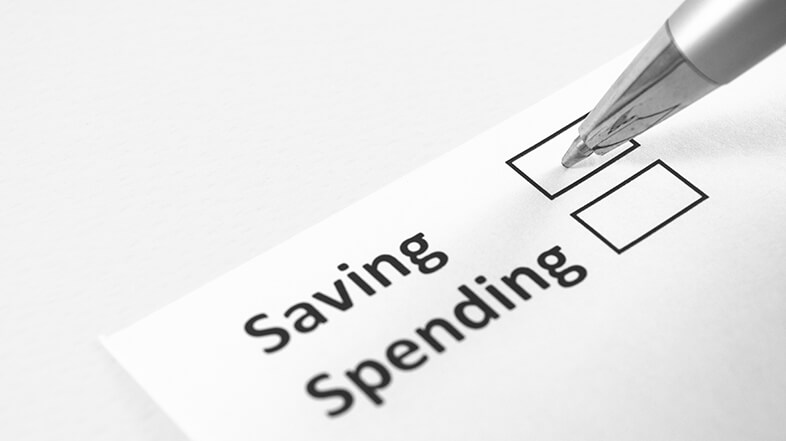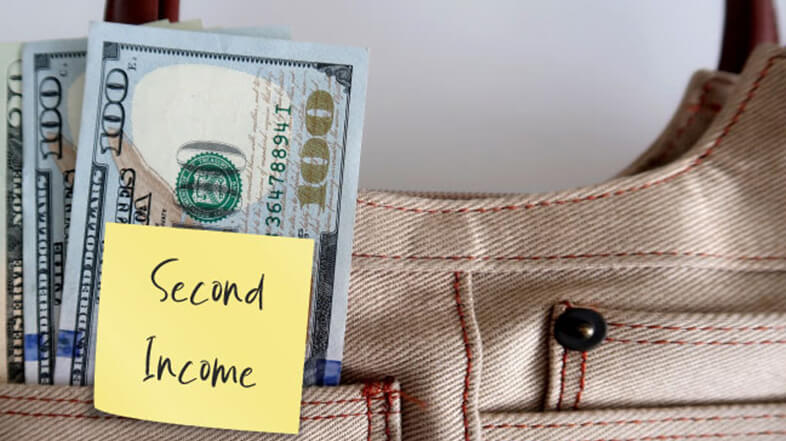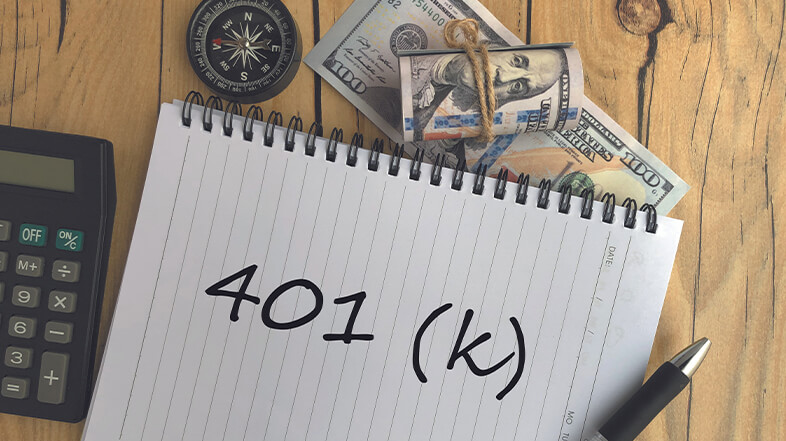
8 Ways to Boost 401(k) Retirement Savings Right Now
If you really want to boost 401(k) retirement savings, the obvious solution is to save more. But that’s easier said than done: otherwise, more people would be on track for a better retirement.
There’s a retirement crisis in America that’s been brewing long before the pandemic hit. According to the June 2021 National Retirement Risk Index report from The Center for Retirement Research of Boston College:
“Half of today’s households will not have enough retirement income to maintain their pre-retirement standard of living, even if they work to age 65 and annuitize all their financial assets, including the receipts from a reverse mortgage on their homes.”¹
According to a recent nonprofit Transamerica Center for Retirement Studies® (TCRS) report, “Eighty-two percent of workers are saving for retirement through employer-sponsored plans, such as a 401(k) or similar plan, and/or outside the workplace. Baby Boomers (84 percent) and Generation X (84 percent) and Millennials (82 percent) are more likely than Generation Z (70 percent) to be saving.”²
When it comes to how much they are saving for retirement, the study found: Total household retirement savings among all workers is $93,000 (estimated median).
Baby Boomer workers have the most retirement savings at $202,000. Other age groups reported the following estimated median savings:
- Generation X (born 1965 – 1980) – $107,000
- Millennials (born 1981 – 1996) – $68,000
- Generation Z (born 1997 – 2012) – $26,000³
It’s clear Americans need to be saving more if they don’t want to struggle in retirement.
Keep reading for 8 tips on how to save more to boost 401(k) retirement savings this year.
#1 At Least Get the Company Match

Meeting the company match is an easy way to boost 401(k) retirement savings. All you have to do is put in what your company matches, and it’s basically free money.
Depending on what your company matches, it may double the amount of what you’re already saving.
Company matches vary from employer to employer. Make sure you know your plan rules and know how much you need to save in order to get the full match. For example, your employer might match 3% of your pay, but you are required to contribute 6% of your salary in order to get the full match.
It’s also important to know your 401(k) plan’s vesting schedule because, depending on your plan’s 401(k) vesting schedule, you may not own the money your employer contributed until you are fully vested. If you are unsure of your vesting schedule, contact HR to find out.
[Related Read: 4 Ways to Potentially Maximize Your 401(k) Company Match ]
#2 Save Additional Money Received

A way to easily boost 401(k) retirement savings – and do so without reducing your take-home pay – is to immediately contribute a portion or all of additional money you receive to your 401(k).
Should you receive a bonus, inheritance, or an unexpected cash influx, redirect it into your retirement account. The same goes for tax refunds.
Remember, if you add to your 401(k), it needs to go through payroll deduction.
We recommend you contact your Human Resources department, tell them the amount you want to invest, and they will take it out of your paycheck(s). Then use the additional money received to live on and make up the difference during this time.
#3 Alter Your Spending Habits

Living beyond your means and overspending plagues all income brackets. Not only does it cause financial strain and stress, but it can also significantly impact the amount you save for your retirement future.
And, if you carry the habit of overspending into retirement, it can seriously hurt your retirement lifestyle.
You don’t have to cut a lot. In fact, you’d be amazed how much more you can save in your 401(k) just by cutting out a few hundred dollars of monthly expenses and applying the money saved to your retirement savings.
Let’s say you found 3 subscription services to cut and decided to cut back to eating out once a week. And, let’s say the dollar amount cut each month totaled $257.
Multiply that by 12 months, and you could save an extra $3,084 a year in your 401(k).
While it may not seem like much, cutting just a few expenses each month adds up over time and may make a big impact on your retirement nest egg.
Curbing spending means forming a new habit of living within your means. Take it one step at a time. Try it for 30 days and see what happens.
[Related Read: Pay Off Debt or Save for Retirement? Which Comes First? ]
#4 Contribute Your Next Raise

While we’re on the subject of contributing more without reducing take-home pay or significantly altering your lifestyle, contributing your raise is an easy and powerful way to boost 401(k) retirement savings.
The next time you get a raise, designate the extra income for your retirement and put it directly into your 401(k). Or take a portion of it and apply it.
If you do this immediately when the raise takes effect, you won’t miss the extra money because you will never see it reflected in your bank account.
#5 Take a Second Job or Side Hustle

If you can’t find a way to save more in your 401(k) without stretching yourself too thin, consider picking up a second job or side hustle, and use that additional money to boost 401(k) retirement savings.
Use the extra money earned to live on, and then contribute more from your paycheck to your 401(k).
#6 Avoid Target Date Funds

More and more employers are automatically enrolling employees in their 401(k) plans.
In fact, more and more companies’ 401(k) plans use target date funds (i.e., 2030, 2040, 2050 funds) as their default option, or Qualified Default Investment Alternative (QDIA).
The Pension Protection Act of 2016 allowed employers to direct plan participants’ assets into a target date fund and not be liable – should the employee not select an investment.
Marketwatch states, “About 70% of U.S. companies automatically enroll employees into 401(k)-type plans, and more than 86% of these firms now direct people’s money by default into ‘target-date funds’ (TDFs).”⁴
According to Vanguard’s How America Saves 2021, roughly 4 in 10 target date investors choose the funds on their own, not through default.⁵
That means 6 out of 10 do not select an investment and are automatically enrolled in the default plan.
Here’s why this may be an issue if you’re one of those investors: target date funds are based on the date of retirement.
If you’re younger and plan to retire in 2050, you’re told to select a 2050 fund. If you’re wanting to retire in 2030, you’d select a 2030 target date fund.
Target date funds fail to take into consideration your salary, profession, risk tolerance, goals, and objectives. You are put into a fund based on your expected date of retirement.
In addition, target date funds may not appropriately manage downside risk. They may underperform in good markets and do a poor job of managing downside risk during tough markets.
According to Morningstar analyst Jeffrey Holt…
“In the long run, the biggest risk in target-date funds is that they won’t meet investor expectations for avoiding losses.”⁶
Those looking to maximize 401(k) performance in 2022 should think long and hard about sticking with the default target date fund.
There are other investment options available to you where you can take into account your risk tolerance and your unique goals and objectives.
#7 Rebalance Your 401(k)

Far too many investors set up a 401(k), fund it year after year, but fail to regularly rebalance their portfolios in order to maintain the initial desired level of asset allocation.
This buy-and-hold strategy may do more harm than good.
Rebalancing is the process of realigning the weightings of the assets in your portfolio to stay in line with your risk tolerance and your timeline for retirement.
This can involve periodically buying and/or selling assets in the portfolio in order to maintain the initial desired level of asset allocation.
When you fail to rebalance, you are essentially turning over your investments (and your future retirement income) to chance and missing out on earning more and keeping more of your hard-earned money.
[Related Read: What Every Investor Needs to Know about Rebalancing a 401(k) ]
#8 Get Help

If you need help with rebalancing your 401(k) or any other tips, consider getting help.
Here’s why: Studies show that getting help from a financial advisor may increase your retirement income and may greatly impact the type of retirement lifestyle you can afford.
This return, the study states, depends on the client’s situation and will vary from year to year.
David Blanchet, CFP, CFA, published a 2014 study during his time as Head of Retirement at Morningstar, titled, The Impact of Expert Guidance on Participant Savings and Investment Behaviors.
The report revealed that participants who received expert guidance had as much as 40% more income during retirement versus those who received no help at all.⁸
If you’ve been hesitant to reach out to a professional for help with your retirement savings, there’s no time like the present to take action.
Use our retirement calculator to see how professional help may improve your future retirement income.
Check out our no-cost guide on The Different Types of Licenses Financial Advisors Have and What They Mean to You.
Sources:
- https://crr.bc.edu/wp-content/uploads/2021/01/IB_21-2.pdf
- https://transamericacenter.org/docs/default-source/retirement-survey-of-workers/tcrs2021_pr_four-generations-living-in-a-pandemic.pdf
- https://transamericacenter.org/docs/default-source/retirement-survey-of-workers/tcrs2021_pr_four-generations-living-in-a-pandemic.pdf
- MarketWatch, Opinion: Target-date funds are more expensive and less effective than this simple investment plan, February 20, 2019
- https://institutional.vanguard.com/content/dam/inst/vanguard-has/insights-pdfs/21_CIR_HAS21_HAS_FSreport.pdf
- Special Report: Fidelity puts 6 million savers on risky path to retirement, Reuters.com March 5, 2018
- https://www.investopedia.com/articles/personal-finance/102616/how-much-can-advisor-help-your-returns-how-about-3-worth.asp
- David Blanchet, Head of Retirement, CFP, CFA, Morningstar 2014, “The Impact of Expert Guidance on Participant Savings and Investment Behaviors”









